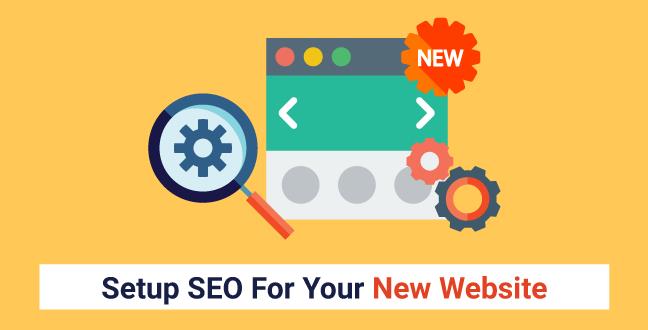
For a new business, brand building can be a critical activity. Your website is an important lever for increasing your brand awareness. SEO for a new website is vital because you want your site to be easily found so that you can get organic traffic as quickly as possible. But why do we need SEO for a new website?
Need for SEO for a New Website
A new website can take a while to get noticed by Google’s indexing crawlers and start ranking in the search results. Through proper SEO, you can accelerate this process and make it easier for customers to find your brand online. Done right, SEO can lower customer acquisition costs. We will next dive into some essential steps for implementing SEO for a new website.
Steps to Implement SEO for a New Website
- Pick the right domain name: It is important to align the name of your company and brand with your domain name. A SEO-optimized domain name tells people what the website is about and the products and services it offers. If done correctly, your domain name will stand out in the search result listing and is more likely to be clicked.
- Choose a high-speed website hosting provider: Choose a reputable web hosting provider who will provide high uptime reliability, quick page loading and support. For pages that take 1-3 seconds to load, the probability that the viewer will leave is more than 30%. Also, poor server response and load time will make it more difficult for Google to index your site.
- Set up Google Search Console: This is a free resource to monitor your websites performance. For new websites, the Google Search Console will help in SEO by providing you data on what search terms visitors are using to get to your website.
- Study your SEO competition: Your SEO competitors are businesses who sell similar products and services, write similar content and get top keywords ranking. After identifying your SEO competitor, you must conduct a keyword gap analysis. This will help you to uncover keywords that you need to rank for in comparison to competitors.
- Research keywords and create your keyword map: Keywords are at the core of your SEO strategy since they connect search queries to the content listed on the results page. Your objective is to identify longtail, low competition keywords that match your products and services. You will need to understand the search intent and create content aligned with the buyer’s journey stage – awareness, consideration or decision. The next step is to create a keyword map. This will include the following information:
- Focus Keyword
- Search Volume
- Location in Funnel
- Name of Content
- Website Location
- Build a strategic content calendar: Convert your keyword map into a content strategy through the following steps:
- Prioritize pages that your website needs immediately
- Optimize your content for SEO
- Track your keywords ranking
- Post consistently
- Ensure an optimized URL structure: This is explained with an example:
- Domain Name: www.yourmarketinglist.com
- URL for Blog: www.yourmarketinglist.com/blogs
- URL for a Blog article on “5 Tips To Improve Your Email Open Rate”: https://yourmarketinglist.com/blogs/digital-marketing/email-open-rate/
- Review Core Web Vitals and page experience: Core Web Vitals report shows how your web pages perform based on real world usage data. You can get a Core Web Vitals report by using tools like PageSpeed Insights.
- Observe accessibility: This refers to the ease with which users and search engines can access the information on your website. Some steps to improve accessibility are:
- Optimize alt text in images
- Use enough contrast and make sure your colours are easy on the eye
- Correctly label elements like buttons
- Make your font size big enough to read
- Promote, promote, promote: Promote your website in all possible social media channels. This in turn will improve your SEO. You might even consider paid traffic for the 1st few months. This will help you to test your website design and content and adjust your SEO accordingly.
What are the benefits SEO? Read here.
SEO is an ongoing process. Continue to monitor and update so that you can optimize your website for the best results.
If you are interested in other digital marketing topics, please refer to our Blog.
